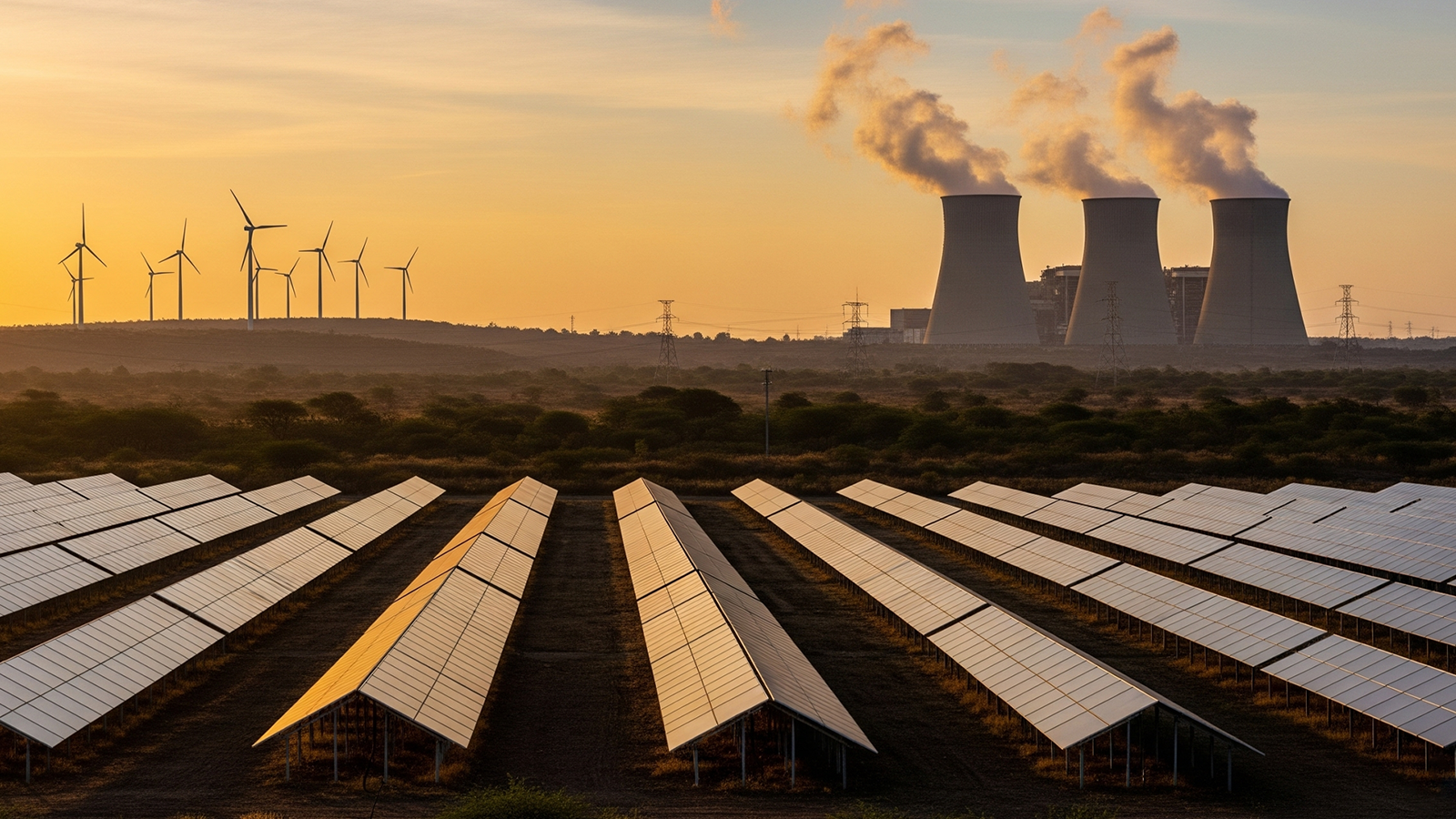Adani’s $60 Billion Gamble to Power India’s Future
From lighting up millions of homes with green energy to building the highways of electricity, Gautam Adani’s $60 billion gamble aims to power India’s future and keep the country from ever going dark.

Imagine India seven years from now. A billion-plus people switching on lights, charging cars, running air-conditioners, powering factories — and all of it without worrying about blackouts. That is the picture Gautam Adani’s group wants to help create — and, for that, it is betting a mind-boggling USD 60 billion (over ₹5 lakh crore) in the country’s energy sector by 2032.
The Green Dream
A big chunk of this money will go into renewable energy — solar and wind. Right now, Adani Green Energy produces around 14 gigawatts (GW) of clean power. To put that in context, 1 GW can light up nearly 7.5 lakh homes. The target is to reach 50 GW by 2030. That is like building the capacity to light up every home in a state as large as Uttar Pradesh.
This will cost USD 21 billion. But the payoff is huge — not just for Adani, but for India’s ambition of becoming a world leader in green energy.
Carrying the Current
Producing power is only half the story. It has to be transported thousands of kilometres to where it is needed. Today, Adani Energy Solutions runs 19,200 km of transmission lines — enough to stretch halfway around the Earth. By 2030, it wants to extend this to 30,000 km, building the backbone that will keep India’s electricity flowing smoothly.
The group will spend USD 17 billion here. Think of it as building the highways of electricity, without which even the cleanest power plants are useless.
Why Coal Still Matters
Adani also knows India cannot switch to renewables overnight. Our industries, railways, and cities still rely heavily on coal-based power. That is why Adani Power, already the country’s largest private thermal producer, will keep expanding. From 17.6 GW today, its capacity will rise to nearly 42 GW by FY32, backed by a USD 22 billion investment.
It may sound old-fashioned, but coal ensures that when demand peaks — on hot summer nights, or during festival seasons — India does not plunge into darkness. As the company puts it, coal is still the “backbone” of India’s baseload power.
Why This Scale of Investment?
Because India’s appetite for electricity is exploding! From 475 GW capacity in 2025, the country is expected to jump to 1,000 GW by 2032. That is more than doubling in just seven years. No other country on Earth is growing this fast.
Renewables will surge from 172 GW to 571 GW, a sector worth USD 300 billion. Thermal power will grow too, needing USD 91 billion more. Transmission lines will expand by 1.5 lakh km, demanding USD 110 billion. All this makes India the world’s most exciting energy market — and India’s biggest power players want to be right at the centre of it.
The Bigger Picture
For India’s power producers like Adani, it is also about scale and vision. By building massive green power plants, strengthening coal where needed, and laying down thousands of kilometres of power transmission lines, the power companies are weaving together the threads of India’s energy future.
For ordinary citizens, this story is not about billions of dollars or gigawatts. It is about more stable electricity at home, less pollution in the air, cheaper power for industries, and millions of jobs created along the way.
Seven years from now, when you flick a switch and the lights come on instantly, chances are a part of that power will be travelling through an Adani line, generated from an Adani solar farm, or backed up by an Adani thermal plant. That is the scale of Gautam Adani’s big gamble.